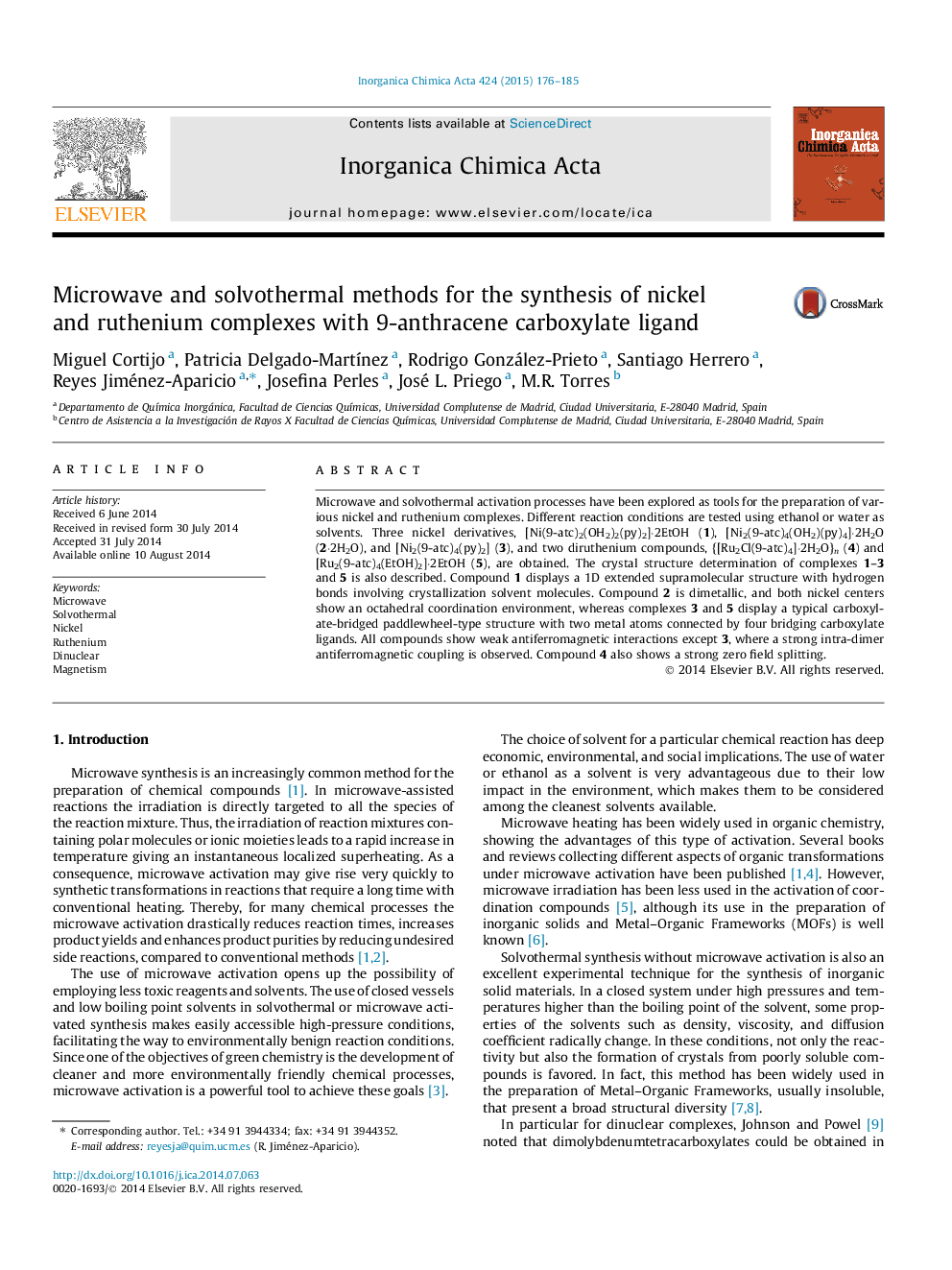| کد مقاله | کد نشریه | سال انتشار | مقاله انگلیسی | نسخه تمام متن |
|---|---|---|---|---|
| 1312148 | 1499165 | 2015 | 10 صفحه PDF | دانلود رایگان |

• Synthesis of paddlewheel compounds using non-conventional methods.
• Mono and dinuclear complexes with the 9-anthracenecarboxylate ligand.
• Intra- and inter-dimer antiferromagnetic coupling.
Microwave and solvothermal activation processes have been explored as tools for the preparation of various nickel and ruthenium complexes. Different reaction conditions are tested using ethanol or water as solvents. Three nickel derivatives, [Ni(9-atc)2(OH2)2(py)2]·2EtOH (1), [Ni2(9-atc)4(OH2)(py)4]·2H2O (2·2H2O), and [Ni2(9-atc)4(py)2] (3), and two diruthenium compounds, {[Ru2Cl(9-atc)4]·2H2O}n (4) and [Ru2(9-atc)4(EtOH)2]·2EtOH (5), are obtained. The crystal structure determination of complexes 1–3 and 5 is also described. Compound 1 displays a 1D extended supramolecular structure with hydrogen bonds involving crystallization solvent molecules. Compound 2 is dimetallic, and both nickel centers show an octahedral coordination environment, whereas complexes 3 and 5 display a typical carboxylate-bridged paddlewheel-type structure with two metal atoms connected by four bridging carboxylate ligands. All compounds show weak antiferromagnetic interactions except 3, where a strong intra-dimer antiferromagnetic coupling is observed. Compound 4 also shows a strong zero field splitting.
Microwave (MW) and solvothermal (ST) activation have been used to obtain nickel and ruthenium derivatives: [Ni(9-atc)2(OH2)2(py)2]·2EtOH, [Ni2(9-atc)4(OH2)(py)4]·H2O, and [Ni2(9-atc)4(py)2], {[Ru2Cl(9-atc)4]·2H2O}n and [Ru2(9-atc)4(EtOH)2]·2EtOH. All compounds show weak antiferromagnetic interactions except [Ni2(9-atc)4(py)2] where a strong intra-dimer antiferromagnetic coupling is observed.Figure optionsDownload as PowerPoint slide
Journal: Inorganica Chimica Acta - Volume 424, 1 January 2015, Pages 176–185